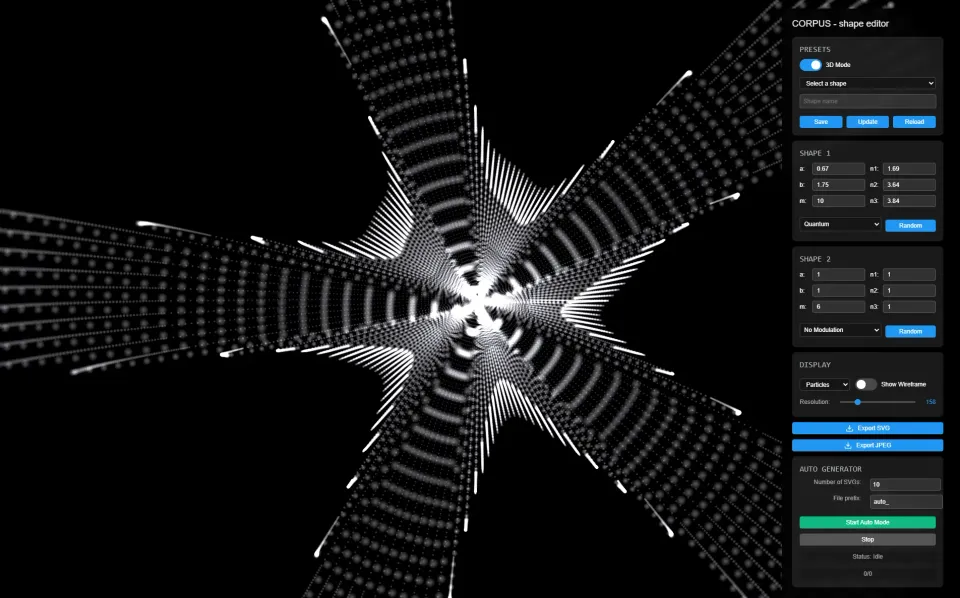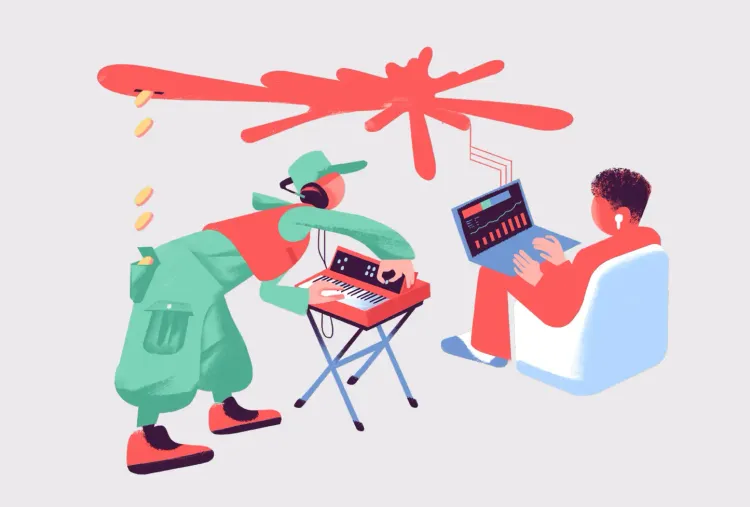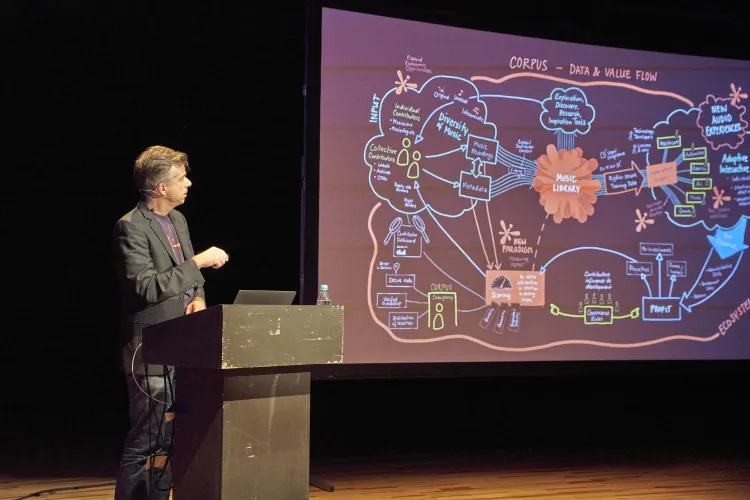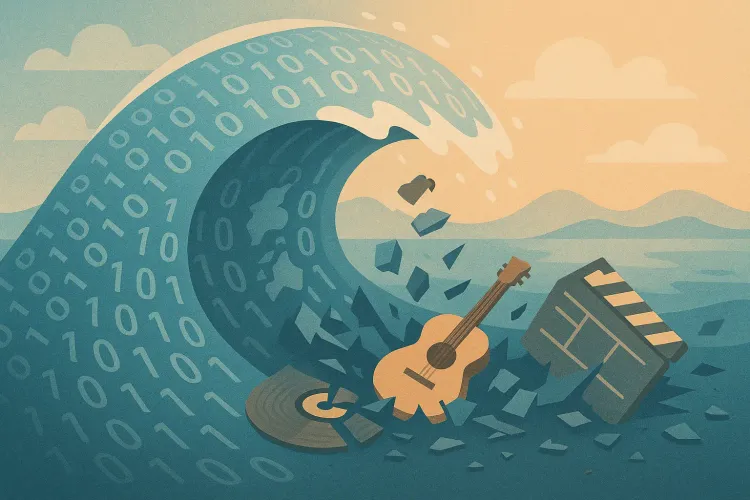Particles and Principles: The Aesthetic Logic of CORPUS

More than ornament or data display, the CORPUS visualization was designed as a system of meaning. CTO Lars Ullrich explains the design philosophy behind it - from algorithmic inspiration to visual storytelling:
The visuals on the CORPUS website crps.ai - algorithmically generated compositions inspired by the forms of nature, as described by Johan Gielis with his superformula, are more than animations to me. They reflect a silent order, found in leaves, blossoms, or cellular structures: alive, malleable, growing. These same principles also operate in music, rhythm and variation, repetition and rupture, structure and expression. In the AI-assisted music production we are exploring with CORPUS, we draw on exactly these patterns. Algorithms do not generate rigid rules, but movements that feel organic, that grow, branch out, interconnect - and still remain comprehensible as a whole.
Every musical fragment that flows into CORPUS is like a seed in a larger ecosystem. The visualization translates this into movement: animated particles, each one an artistic contribution, in constant flux together, connected by an invisible field of relationships. Three thoughts accompany me again and again:
Collective creativity - every contribution matters, visible and effective as part of the whole.
Organic unity - coherence arises not through force, but through shared principles.
Motion and possibility - the form remains open, in constant flow, a space for new thinking and action.

At the center is the image of many individual parts, each with its own direction, its own rhythm, yet interconnected. The CORPUS project is an invitation to a community where individual voices not only find space, but inspire and amplify one another. It’s less about control, more about resonance - the experience that diversity is not a hindrance, but gives rise to a pattern greater than the sum of its parts. This principle runs through everything: from the design of the website to the internal architecture of the system.
What is growing here is not just a design, but an expression of how we see ourselves: adaptable, open, networked, always in motion.
The current demo dataset, which reveals itself when hovering over the particles, is just an early idea of the final design. Step by step, real musical content will be integrated until the abstract visualization becomes a living, explorable sound network. I imagine a navigation system that not only lets you scroll through musical contributions, but lets you hear them, link them, explore them - almost like a musical compass guiding you through harmonies, rhythms, and sonic textures.
Each contribution will become more than a visual element: it will carry information, context, origin, legal framework. Metadata about artist, genre, production time, or licensing status will merge with the visual representation, making the network permeable for insight - and for new creative connections.
For me, CORPUS is not a finished system, but a process, a movement, a proposal. I hope you feel invited to take part - with ideas, critique, questions, music. Here, every trace can become an impulse, every gesture a way to rethink the space between code and composition. Whether you’re a developer, musician, researcher, or simply curious - on crps.ai you’ll find not just information, but a living form that welcomes you. What drives me is the hope that technology doesn’t remain just a tool, but becomes part of a creative breath - open, precise, inspired.





